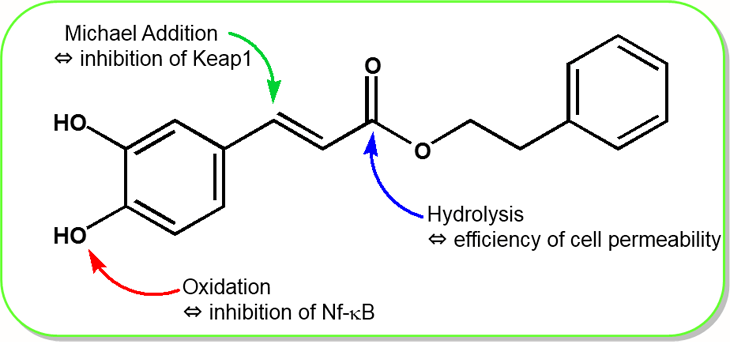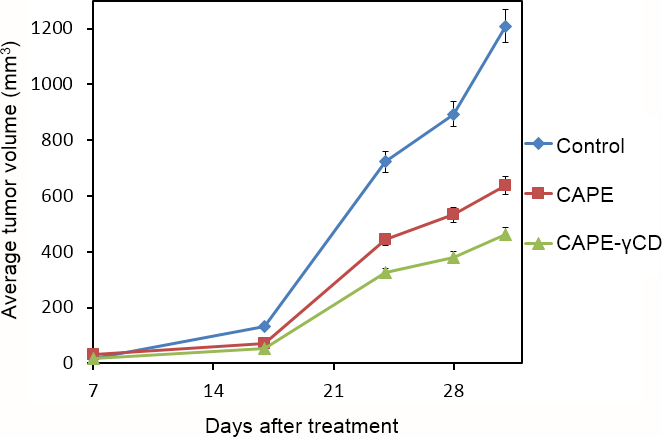No. 65 Effects of γ-Cyclodextrin on Anti-Cancer Activity of Caffeic Acid Phenethyl Ester
This research was done through collaboration with National Institute of Advanced Industrial Science and Technology (AIST), and reported in 31th Cyclodextrin Symposium (Shimane, Sep. 11~12, 2014).
Background
Our company have attractive technologies in functional food and personal care fields which raise the water solubility, stability and bioavailability of a functional ingredient by using the inclusion property of cyclodextrin (CD).
Caffeic acid phenethyl ester (CAPE) is a key component in New Zealand propolis having some excellent health benefits like anti-tumor effect. However, CAPE is unstable and easily converted into caffeic acid diminishing its health benefits. Previously, we reported the stabilizing effects on CAPE by γ-CD (* please refer to the newest result of research "36th" of our homepage for details.).
In the present study, in vivo anti-tumor activity of CAPE-γ-CD complex by oral administration was explored.
Structure of CAPE
Reactive groups of CAPE

Preparation of CAPE-γ-CD
Result Fig. 1

DSC peak of CAPE was not observed in the case of CAPE-γ-CD.
→ CAPE-γ-CD was confirmed as a inclusion complex.
Anti-cancer activity of CAPE-γ-CD (in vivo)

Method
BALB/c nude mice (4 weeks old, female) were bought from Nihon Clea (Japan). For anti-tumor assays, human fibrosarcoma (HT1080) cells (6 x 106 cells suspended in 0.2 ml of growth medium) were injected into the nude mice subcutaneously (two sites per mouse). Control group was treated with 1% carboxymethyl cellulose (CMC) and used as a carrier for other groups also. CAPE and CAPE-γ-CD groups were fed (Gavage; 200 μg CAPE / kg body weight with 1% CMC) using 20 g gavage needle. The treatment was started three days after the injection of cells, and was repeated every alternate day. Tumor progression were monitored in three groups for one month. Volume of subcutaneous tumors was calculated as V = L x W2 / 2, where L was length and W was width of the tumor, respectively.
Result Fig. 2

The progression of tumors were significantly delayed in CAPE and CAPE-γ-CD fed mice as compared to the control group. Furthermore, CAPE-γ-CD fed mice showed stronger suppression of tumor growth than the CAPE group.
Conclusion
Enhancement of bioavailability of CAPE by the formation of inclusion complex with γ-CD was confirmed.
